LATEST BLOGS
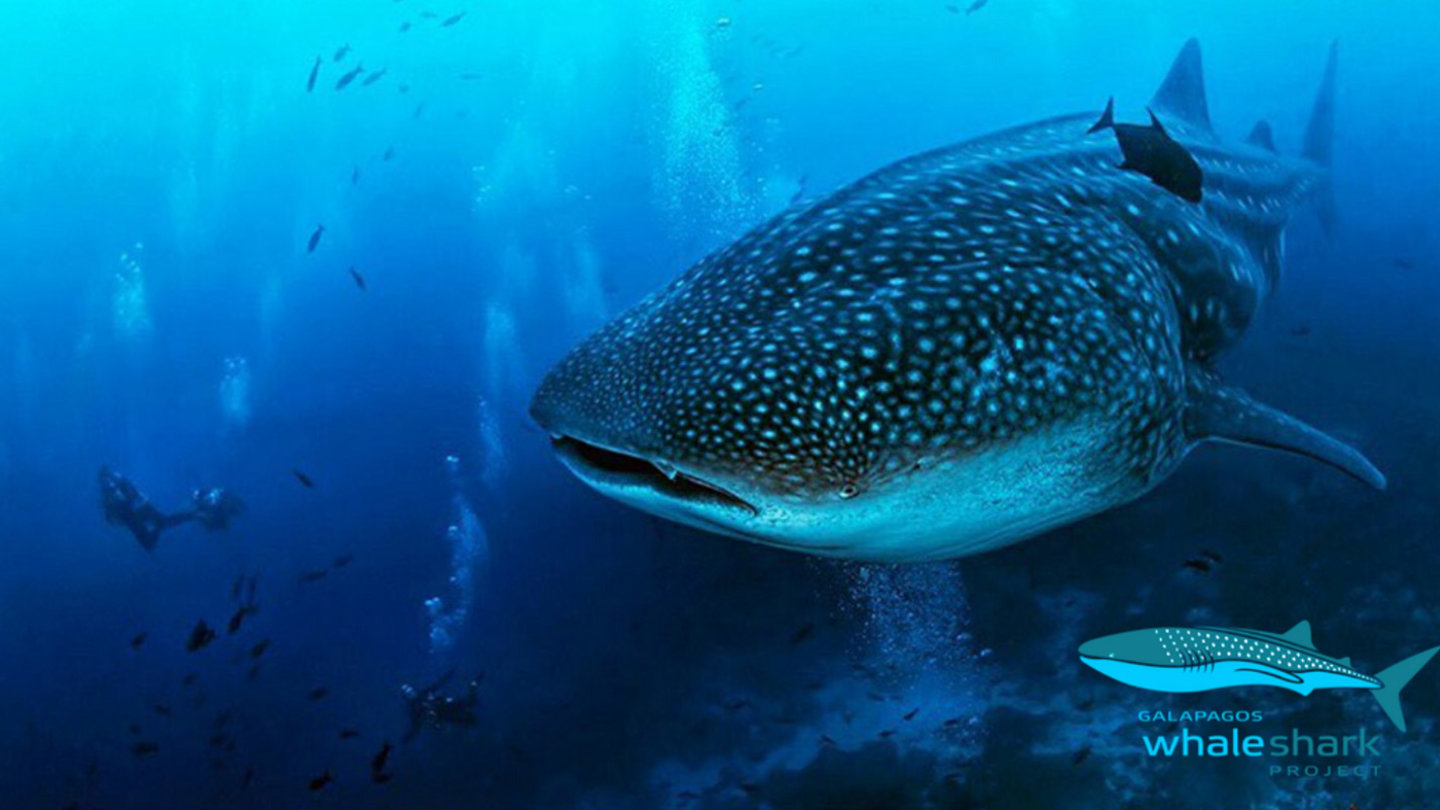
The Galapagos Whale Shark Project
By Terry Smith | Blog | 10 Jun 2020
THE GALAPAGOS WHALE SHARK PROJECT
The Galapagos Whale Shark Project Team is a dedicated group researching & creating a life data baseline for Whale Sharks.
A great read for World Oceans Day.
The Galapagos National Park is such an amazing area it offers an opportunity to do just that. I will outline who they are, what they are doing, the results they have recorded, & what you as a scuba diver can do to help collect & share the data on whale sharks.
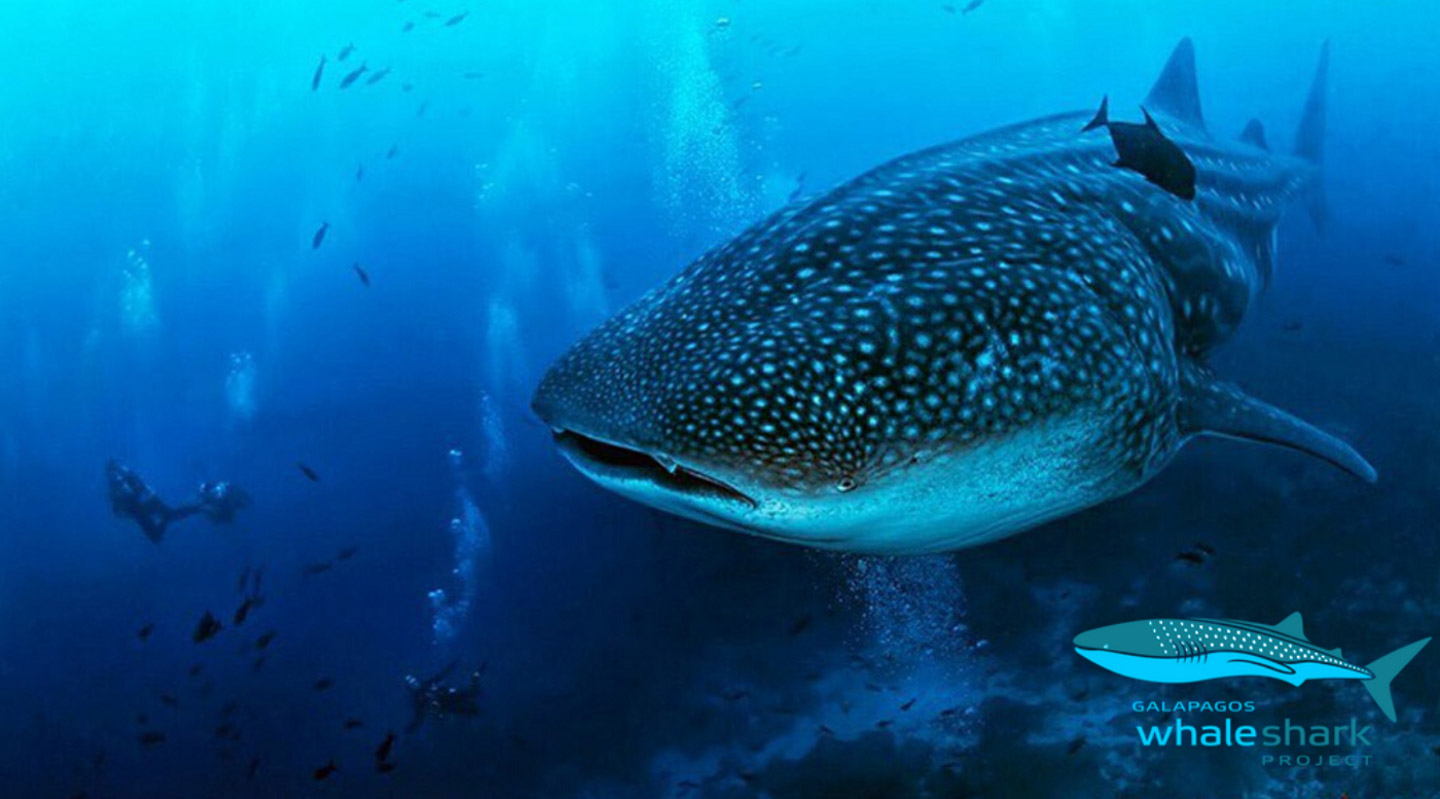
I have been diving for 20 years now & we all remember our first whale shark encounter, but it’s the ones that you missed that also stay with you. The one that got away, was when I was out on the Aggressor Thailand liveaboard on a trip to the Similan Islands. Although all the dive sites in this area are amazing, the goal of the trip was a site called Richelieu Rock. A great dive site which is a pinnacle of rock which just sits above the water on low tide, in the middle of the ocean. We had been diving the trip in two groups & as we dropped in, one group went left & my group went right. When we ascended & boarded the boat, we found out that the group that went left saw a whale shark. We were gutted but happy that the other group had seen one. We were hoping it may still be in the area on the next dive, but it was not to be. These magnificent creatures are becoming rarer to find.
The whale shark -
Rhincodon typus, can be considered a slow-moving (for its size it moves effortlessly but fast compared to us), filter-feeding shark & is the largest known extant fish species. This is part of the reason why they are becoming harder to find. As with all fish in our sea, species are being overfished and in some countries whale shark, is considered a delicacy.
Perhaps the most distressing thing though is not much is known about them as a species. Where do they breed, in one specific area or multiple areas? What are their patterns, i.e. time of year, distance & routes, to get to that breeding area? There is only the one genus of the whale shark, one species, so the whale shark we missed in Thailand could have grown up in the Galapagos Islands. Does it go back there? Information is scarce & these are the key questions the Galapagos Whale Shark Project Team want to answer. Once a baseline is established with collected data, areas, pathways & marine reserves, can be set up.
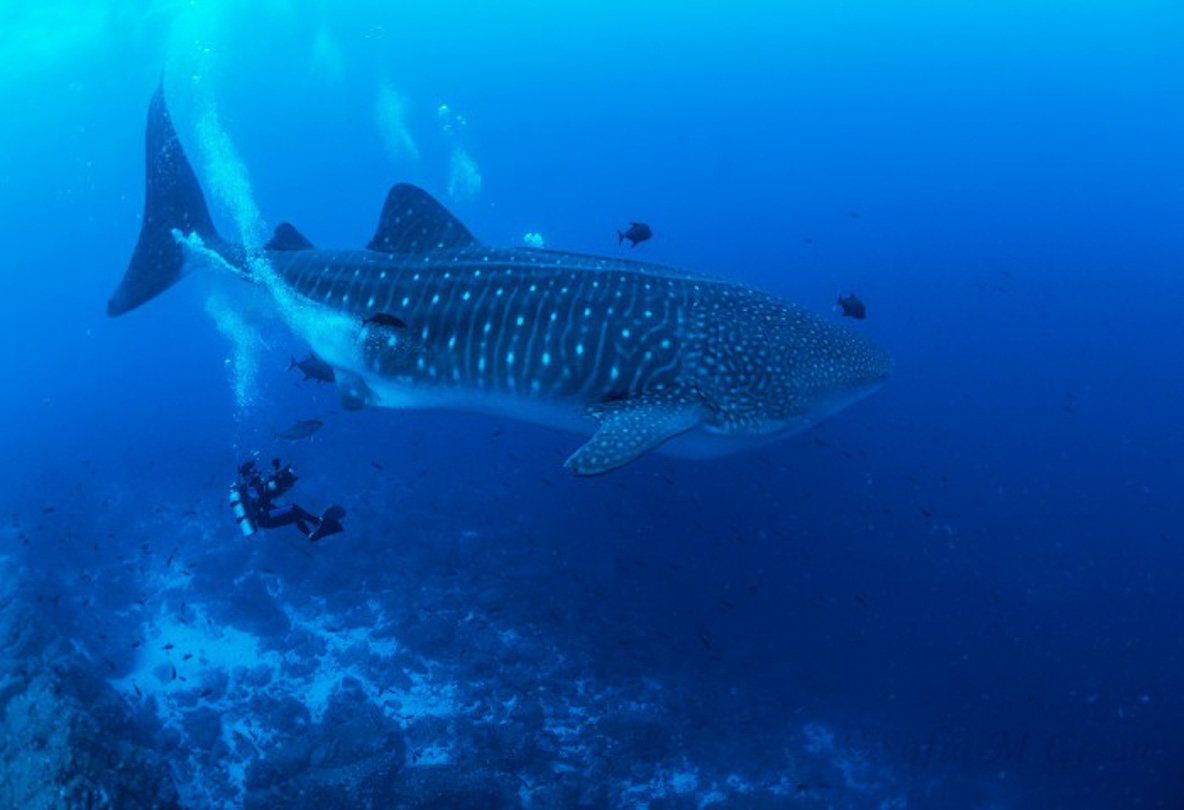
Photo: Diver documenting the GWSP work @Sofia Green
THE GALAPAGOS WHALE SHARK PROJECT
The Galapagos Shark Whale Shark project (GWSP) was started by Jonathan Green in 2005, but he has been collecting data for many years previous to the actual project creation.
Jonathan has worked as a Dive Master since the end of the 1980s & it was an exploratory dive in the Darwin Islands that led him to spot his first whale shark. He was awestruck, as a massive underwater “fish” over 10 meters in length swam by. He wanted to know more. Speaking with local DM & fisherman they tended to be seasonally spotted but there was no real record of where they were spotted, the size, identifying marks (an area of the dot patterns on the back are used to ID a whale shark, these are explained later) & the activity.
He started to ask local DM & divers to start recording the movements & location. The data kept building up as everyone was enthusiastic to help. The more he began to learn about this species the more he realised that virtually nothing was known about the natural history of the species, not only locally & regionally but also worldwide.
Looking for funding & collaboration he approached the Galapagos National Park Service for help, but they had no funds available. However, they did like the idea & permitted it to go ahead. They also suggested trying the research station on Santa Cruz Island. It was here he meets Dr Alex Hearn. Alex liked the idea & it was together they co-foundered The Galapagos Whale Shark Project (GWSP). The GWSP project proposed to begin tagging a number of individuals to investigate not only their movements in & around the Galapagos Marine Reserve but around the Eastern Pacific & further.
The project struggled at the start as it was hard to gain funding, but they continued with the recording of data, spreading the word & what they wanted to achieve. It was this interaction with divers that lead to the first funded research trip. Jonathan meet & discussed the project with a Dr George Rapier & his partner, who liked the idea & decided to help. Through, The Blake, Kimberly & George Rapier Charitable Trust the GWSP received funds, which led to the first whale shark research trip in 2010 & the two following it. Since that first trip funding has been attained each year from individuals, NGO’s & conservation bodies, as the work they do is invaluable. (2020’s trip is funded by the Galapagos Conservation Trust).
WHAT IS THE INVALUABLE WORK THEY DO ON THE RESEARCH TRIP?
(The research trips they conduct are set under strict guidelines & permits from the Galapagos National Park Service, the local government body. These ensure the safety of the marine animals, & the marine environment).
The main question is why the female whale sharks visit the Galapagos Islands, as the population is dominated by females, with over 99% female, over 97% adult & apparently in an advanced gravid state, which in the eyes of the marine science world is seen as one of the possible pupping areas.
The research trips are a very hands-on trip, conducted normally at the start of the season which runs from July to October, using a 10m dive vessel, Queen Mable. It takes up to 16 people, on a 12-day trip.
On each trip, the researchers aim to gather identification, depth, travel, gas levels, & hormone levels. To do this the use non-invasive tactics with satellite tagging, blood draw & the use of an underwater ultrasound.
In 2019 they used fin mount tag deployments but modified the mount to hold two tags, the SPOT6 257 & the miniPAT. Using these tags they correlate the data about diving behaviour, (with the miniPATs), with position relative to the ocean floor, (with the SPOT6 257s), to determine if diving & surface movements are related to benthic features & geological structures such as fracture zones, faults, fissures, seamounts or even plate margins. This year they will deploy eight SPLASH10 tags & two SPOT6–257/miniPats hybrids, in the same manner. (The tag is held by a clip on the fin which is non-harming & will self-release).
The blood samples were analysed onboard for basic data, partial pressure of O2, CO2, pH & Lactic Acid. The later can be used to determine stress levels in an individual & more importantly has shown that after tagging & other procedures the lactic acid levels do not show any stress in the animal.
Posterior analysis through electrophoresis by Dr Ryo Nozu, from the Okinawa Churashima Foundation, of hormone levels, proved inconclusive for signs of pregnancy. Dr Nozu writes in his report “Blood samples provide us with various physiological information. For example, sex steroid hormones concentration in the blood is useful for estimating the reproductive status of individuals.”
Dr Nozu’s team also bring an ultrasound unit with an underwater housing (perhaps two only in the world), which took the world’s first every non-captative images in 2018. Whale sharks are ovoviviparous with eggs hatching within the female’s uteri & the female giving birth to live young so to using this could give pictures of the young.
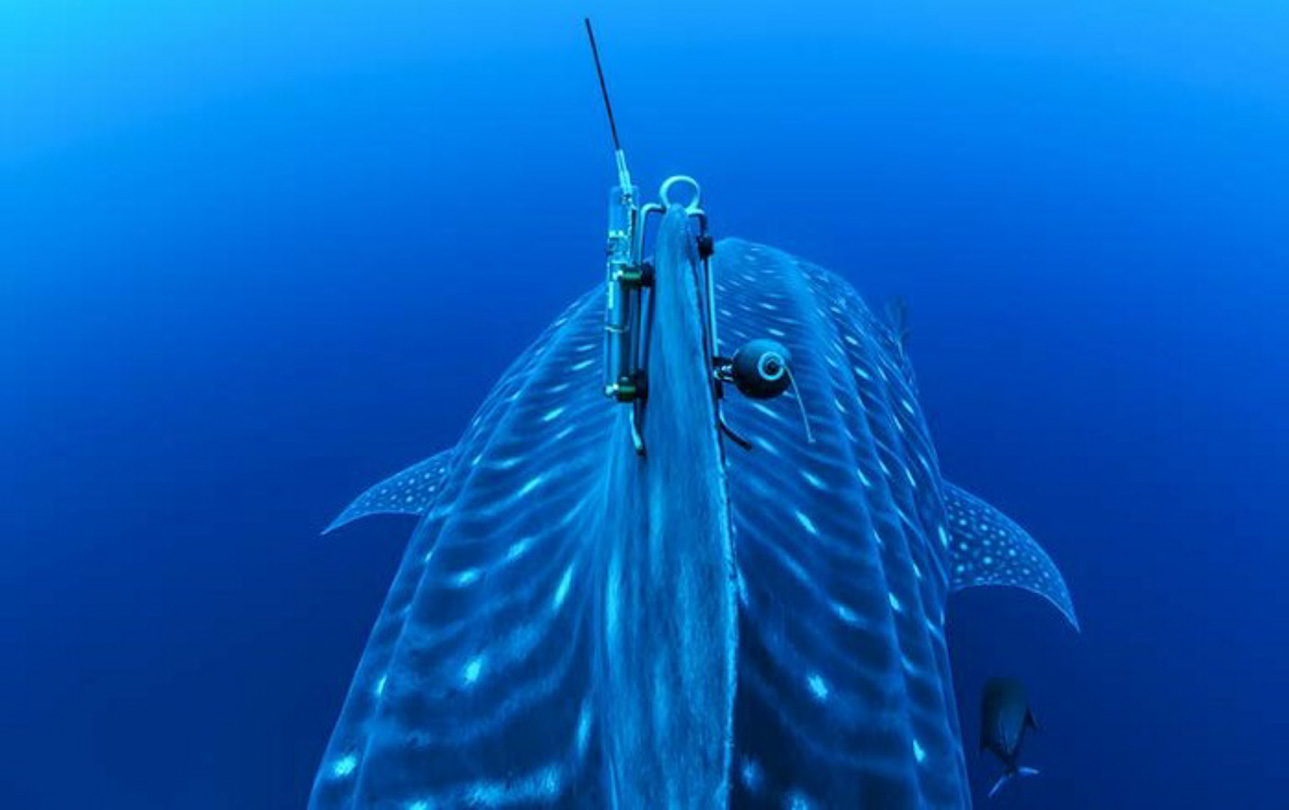
Photo: Hybrid miniPAT/ SPOT6 257 deployed on the fin. @Simon Pierce
RESEARCH TRIP RESULTS
The trips have a great success rate. In 2019 a total of 33 individual whale sharks were photographed and the data submitted to the Wild book for Sharks, www.whaleshark.org.
The team deployed five SPOT6 257 & five miniPAT tags in 2019 & in 2018 they had five SPOT & five mini’s deployed. Data from these & the five years before (seven years in tracking data) have shown that whale sharks frequently pass by Darwin Island, but few stay longer than 48–72 hours. Many of the tracks also show that after heading west the same sharks return past Darwin Arch before heading south in November-December, towards the Peru shelf break where they appear to spend time foraging in the rich upwelling areas of high productivity associated with the Peru Coastal or Humboldt current.
From last year’s 2019 research trip they successfully collected blood from seven whale sharks, six females & one male. The success of this blood draw is also leading to fieldwork that will be aimed at studying the baseline health of the population of whale sharks in the Galapagos compared to other populations where this study has been undertaken. GWSP was hoping to incorporate this with the Georgia Aquarium team who have carried out this work previously and include a Nano plastics analysis of the blood, but due to the virus situation have pulled out of the 2020 trip. (Detailed blood drawn data & other data can be found on their website).
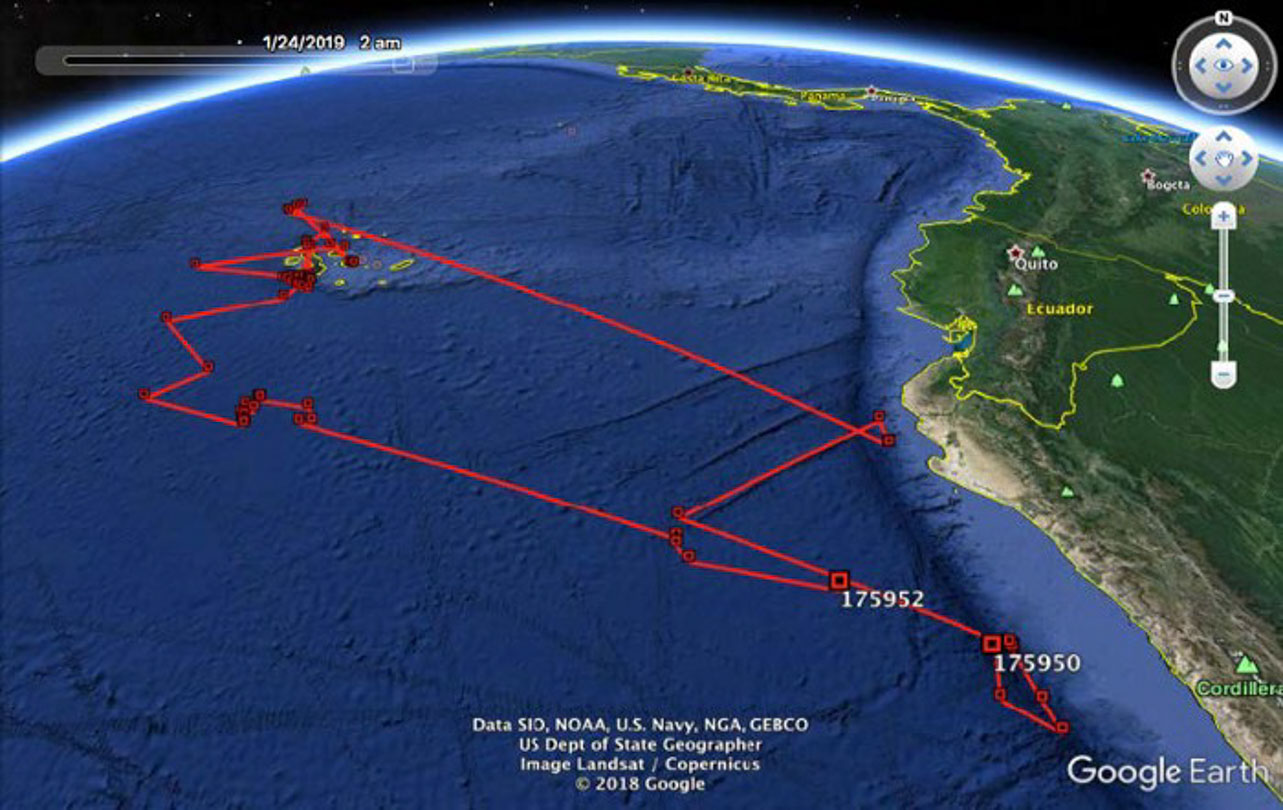
Photo: Two whale shark Tags #175950 & 175952 showing their respective tracks from Darwin Arch to the Peru shelf drop off. 2019 tag results.
2020 RESEARCH TRIP
This year two research trips were scheduled, the first in July & the second later, to gather data from the start & end of the season, but due to the virus situation, only one trip will run in July (hopefully). (2021 still has two research trips scheduled with one already funded). One partner has also pulled out.
The team will deploy eight new — SPLASH10 satellite tags & two of the SPOT6–257/miniPAT’s hybrid tags, conduct visual ID’s, collect blood samples. (Sadly no ultrasound as the Okinawa team will not join).
THE TEAM
Since humble beginnings, the team has grown. Jonathan Green is the director of GWSP, is an elected Fellow of the Royal Geographical Society of London & has been involved in many productions one of which was the BBC Blue Planet II series, Episode 7.
The Principal Scientist is Dr Alex Hearn, a Researcher & Professor of Biology at Universidad San Francisco de Quito & a founding member of the MigraMar network of scientists studying the movement patterns of threatened migratory marine species in the Eastern Pacific.
Dr Simon Pierce founded the Marine Megafauna Foundation’s flagship research program on whale sharks and is now studying these gentle giants in seven countries. The site www.whaleshark.org is the global whale shark database which he set up.
Dr Chris Rohner, who is a collaborating Scientist is also the Principal Scientist with the Marine Megafauna Foundation.
Harry Reyes, a marine biologist & scientist from the Galapagos National Park Service.
Jenny Waack helps on the research trips but is the driving force to get the knowledge & work of the GWSP out in the media & has started the Galapagos Whale Shark Dive Charter trips.
Sofia Green rounds out the team as the intern volunteering so she can write her Master’s thesis on Whale Shark Diving Behaviour in relation to benthic, (seafloor) features.
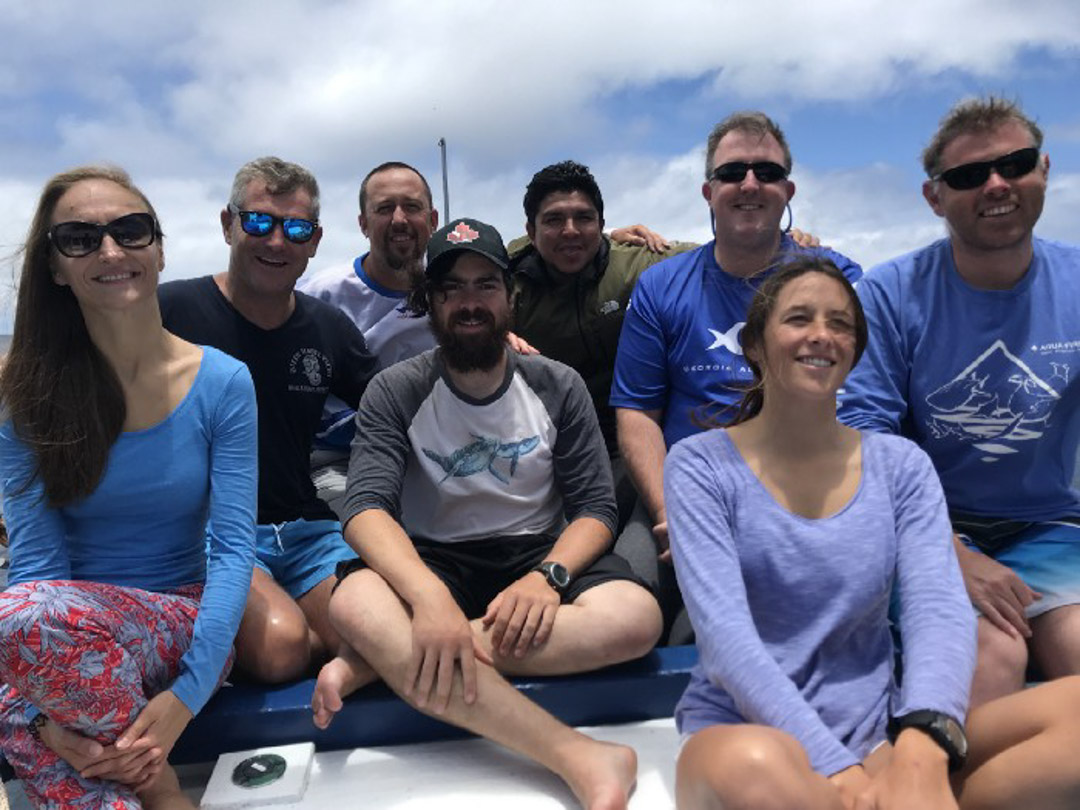
Photo: Left to right Jenny Waack (5), Jonathan R. Green (5), Alex Hearn (4), Jeff Garriock, Harry Reyes (1), Alastair Dove (6), Sofia M. Green (5) & Simon J. Pierce (2) — numbers correspond to the partner logos in the next photo.
PARTNERS
Below are the partners from the 2019 Trip

Photo: The partners involved. Numbers represent the previous team photo affiliations. 1-DIRECCION DEL PARQUE NACIONAL GALÁPAGOS, 2-MARINE MEGAFAUNA FOUNDATION, 3-GALAPAGOS CONSERVATION TRUST, 4-UNIVERSIDAD SAN FRANCISCO DE QUITO, 5-GALAPAGOS WHALE SHARK PROJECT, 6-GEORGIA AQUARIUM, 7-PLANETERRA
This leads us to what you can do to help. They are several options with the main being able to join the Galapagos Shark Diving Trips.
WHAT IS THE GALAPAGOS SHARK DIVING TRIPS?
These trips are for the SCUBA diver. Jenny Waack has created GALAPAGOS WHALE SHARK DIVING TRIPS. Working with Jonathan Green, these trips designed to share the wealth of knowledge they have, the passion & spread the word that whale sharks need protecting.
You can go out on a seven-day, eight-night dive liveaboard which has amazing diving, comfort & great food. Jonathan has over three decades of dive experience in this area & as your dive guide, will take you to the best dive sights to see whale sharks.
Not only will you have a nice cabin, great food & be guided by an expert, around one of the most amazing wildlife parks in the world, but you can help record the encounters with the Whale Sharks. They want you to photograph each encounter, so they can upload the photos into the database for tracking. You are actively helping the data collection. (You will not be tagging or conducting any intensive diving, it’s all leisure & relaxed diving).
Jenny has uploaded over 600 photos of unique whale shark encounters. She is committed to the project & will share the uploaded links with each diver so they can see if any other encounters are recorded.
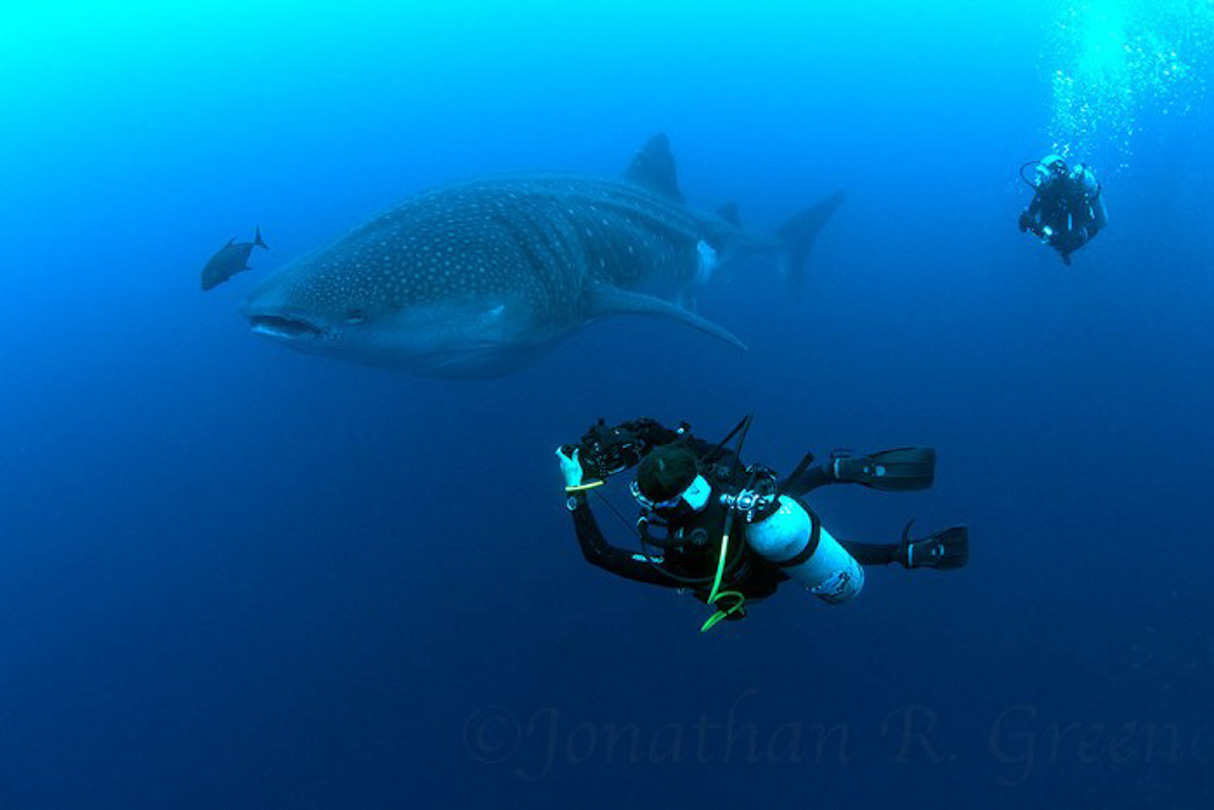
Photo: Trying to capture the ID marks @Jonathan Green
HOW DO I IDENTITY A WHALE SHARK?
You will need to take a photo of the dot or spot marking on the left flank from the fifth-gill slit to the anterior base of the dorsal fin (see diagram below). Once recorded please upload to Wild Side.
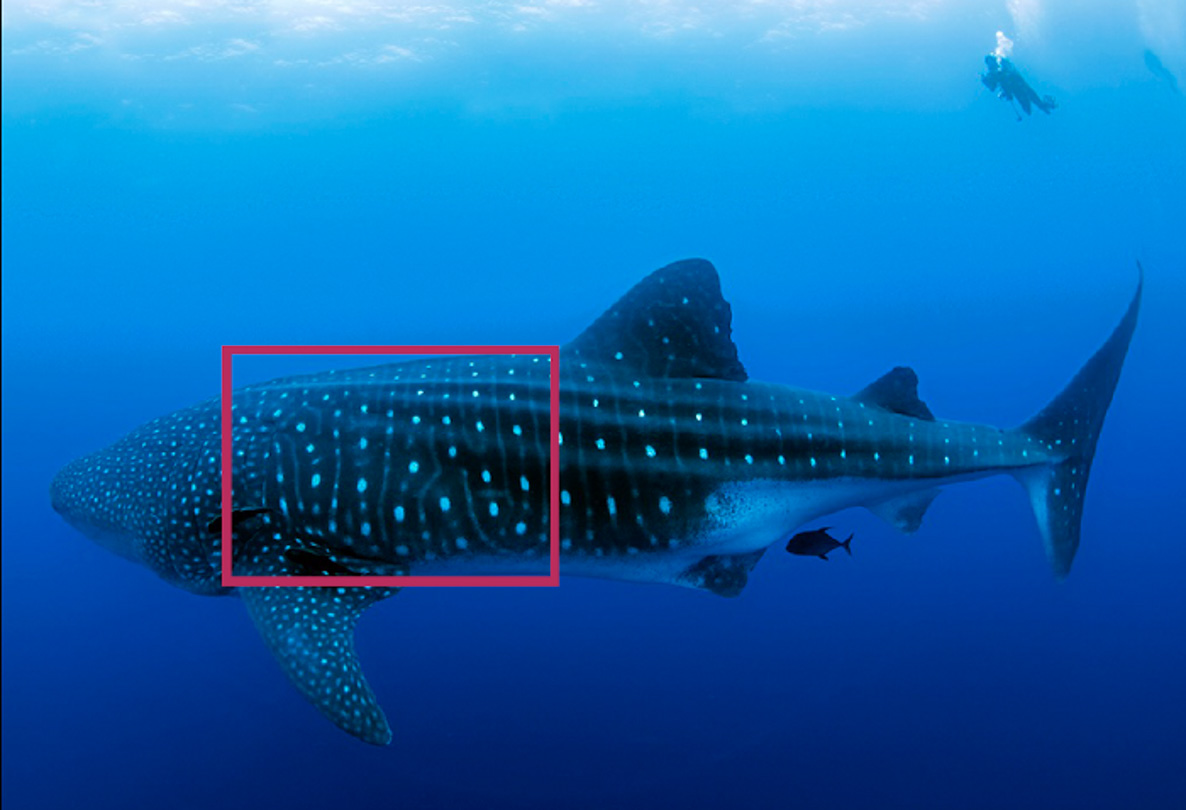
Photo: the section you should take a photo of to record the ID of a whale shark
WHAT CAN YOU DO?
There are several ways to help the Galapagos Whale Shark Project.
You can donate directly through their website. You can take a photo to identify every whale shark you encounter anywhere in the world.
But the most direct help you can do is join one of the Galapagos Whale Shark Dive trips. Not only are you supporting them financially to conduct more research trips, but you also help collect direct data, and you see how these amazing fish need to be protected. You do not want to dive again always keep hearing about the whale shark that got away!
Contact the Galapagos Shark Diving Trips here or to donate to the Galapagos Whale Shark Project. If you would like a travel package from your home country, you can contact their travel partner Pelagic Dive Travel. Each way will still benefit the project.
Recent
-
Thailand Arrival - Part 2
10 Apr 2022 -
Thailand pre-travel - Part 1
28 Feb 2022 -
CICI Turtle Conservation
1 Oct 2021 -
Galapagos Whale Shark Project - 2020 Research Trip Report
7 May 2021 -
Scuba Digital Dive Show
19 Oct 2020 -
Conflict Islands Dive Report
1 Oct 2020 -
SunButter Skin Care Partner
18 Jun 2020 -
The Galapagos Whale Shark Project
10 Jun 2020 -
Keep Supporting Conservation
1 Jun 2020 -
The Focus
5 Feb 2020



